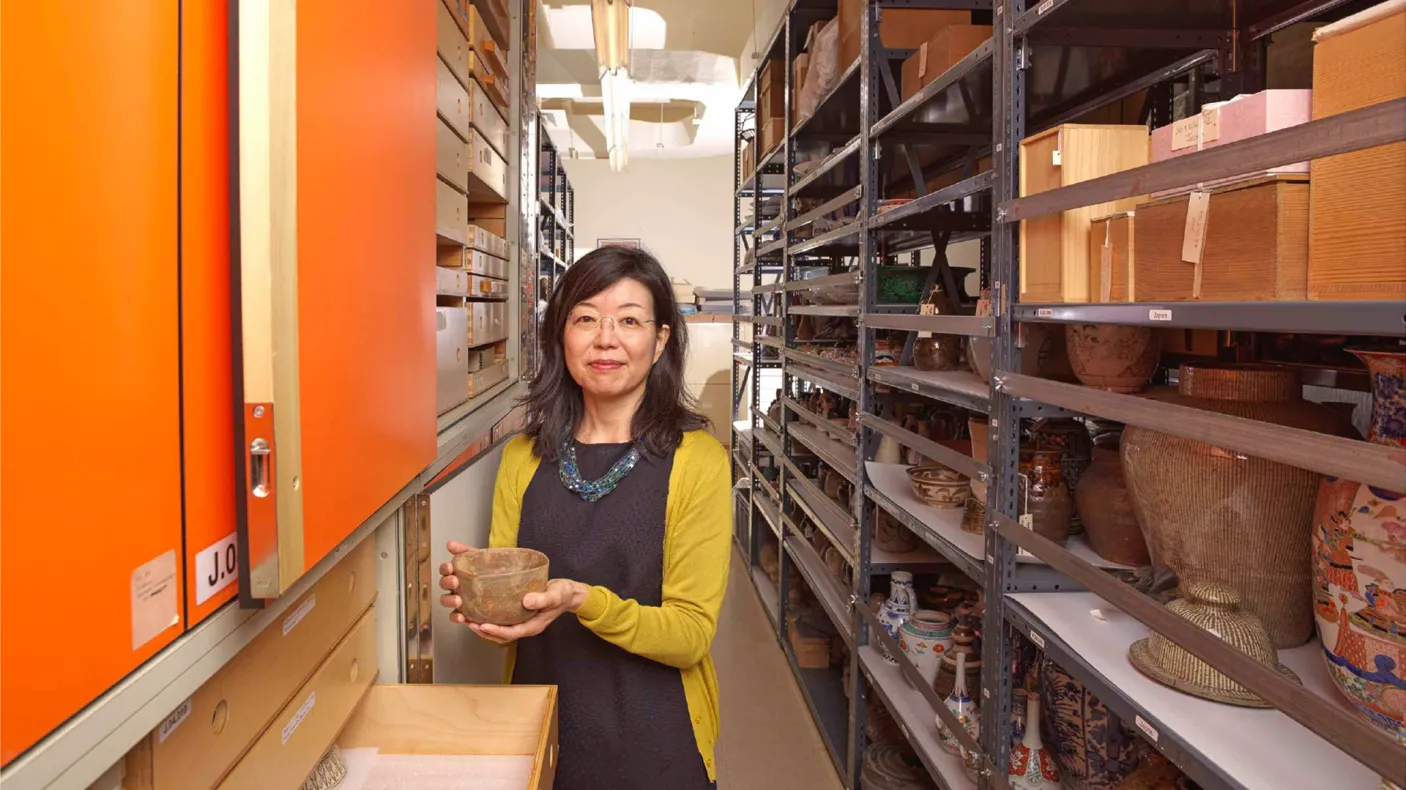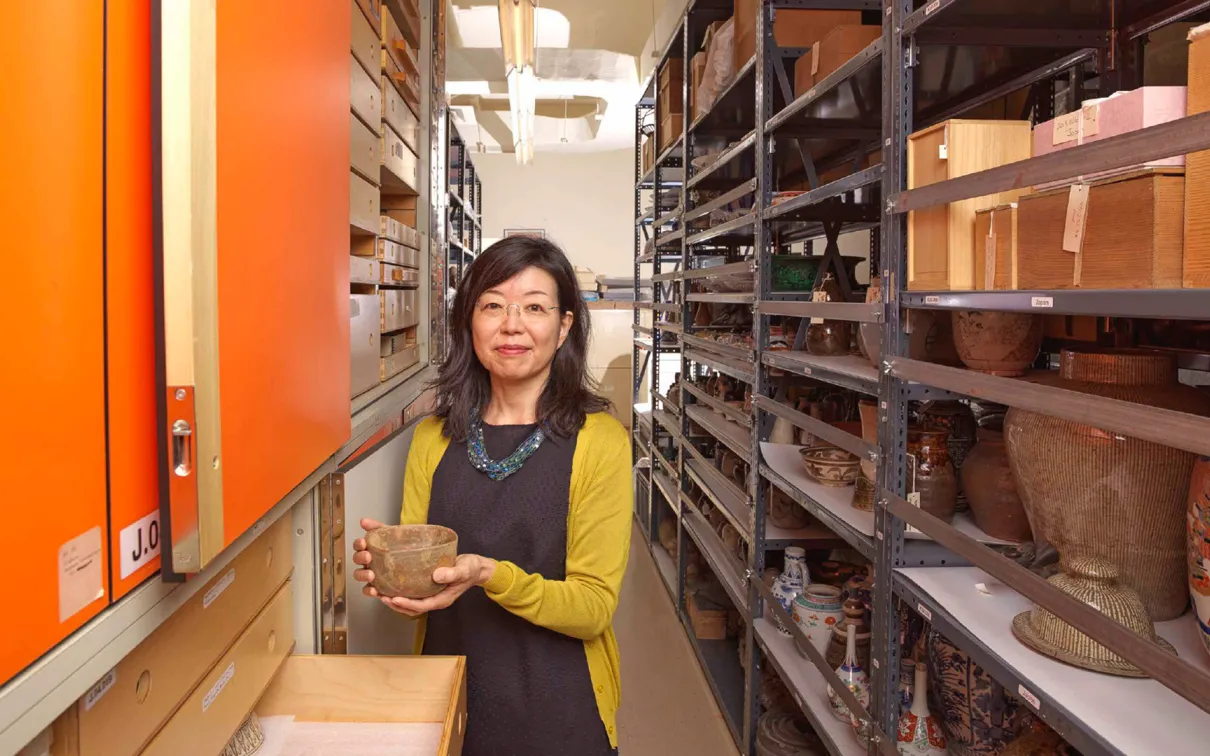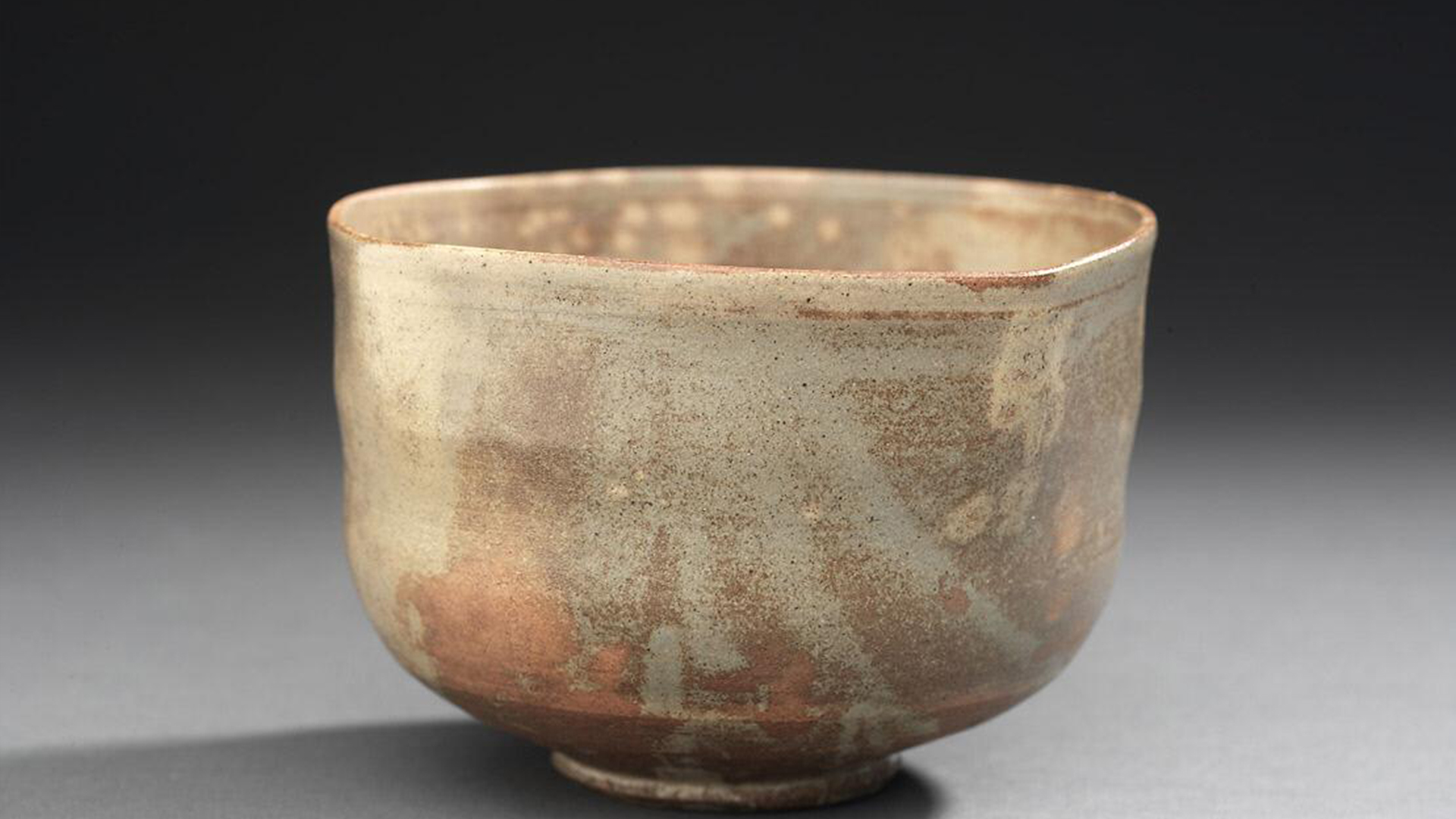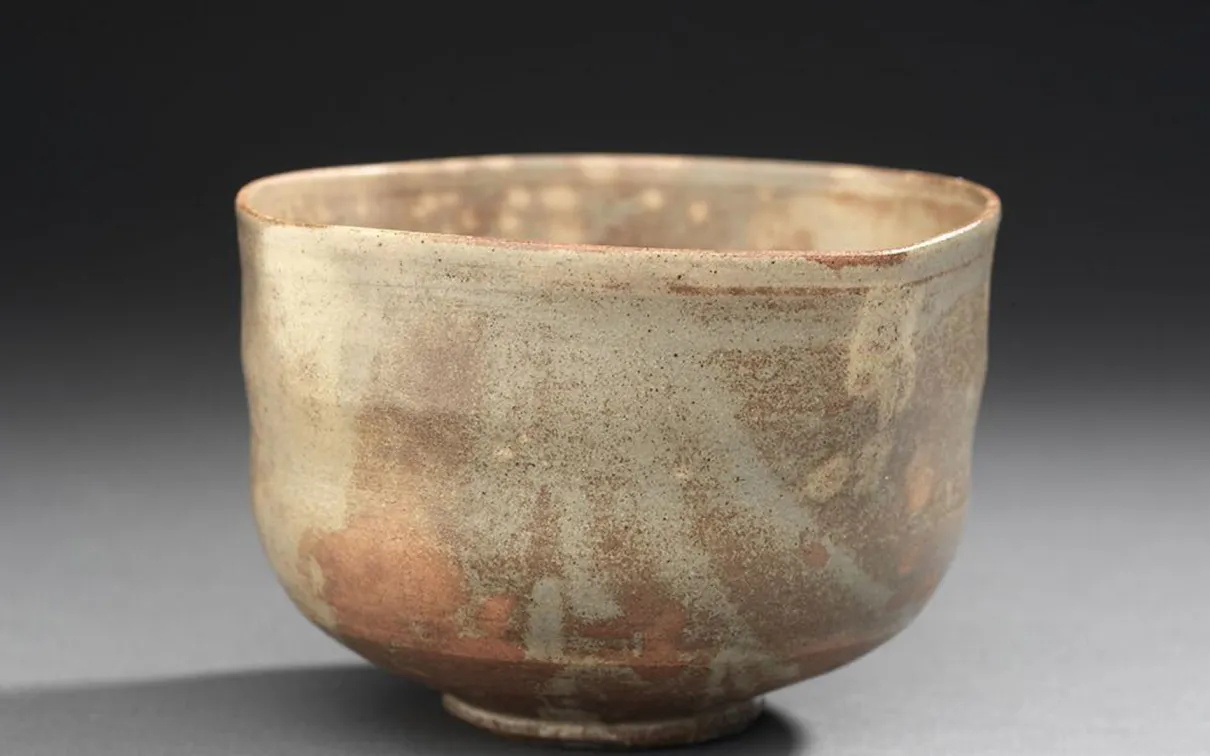Curating Japanese Art
From early aspirations of becoming a comic book artist to a career in museums, Akiko Takesue discusses the evolution of her interest and expertise in Japanese art.
Published
Categories
Author
You started your curatorial career in Canada
You started your curatorial career in Canada, and are now back here after quite some time. What drew you to ROM?
As many of my colleagues know, I am both new and familiar to ROM. I started in 2001 as a visiting scholar to catalogue the Japanese collection, as Academic Advisor for the first Prince Takamado Gallery of Japan in 2003–2005, and as a fellow on and off until around 2014.
Prior to the ROM, I worked as a curatorial assistant at the Art Gallery of New South Wales in Sydney, where I discovered my interests and love for Japanese historical art. But it was during my days at the ROM when I cultivated my curatorial skills and working knowledge of museum operations. You cannot imagine how much I loved to work in the sixth-floor storage rooms back then!
After I completed my PhD at York University in 2016, I had the privilege to work in other museums outside Toronto, namely, the Montreal Museum of Fine Arts and the National Gallery of Art, Washington D.C. While these experiences allowed me to expand my perspective and grow further as a curator, the ROM remained in my mind as sort of the origin. Now I am truly happy to be back at the ROM and see a familiar collection with fresh eyes.
Can you tell us a little bit about your background and what led to your working in museums?
I was born and raised in Tokyo, Japan, and I am the only family member who lives outside the country. As a kid, I loved drawing and painting and my childhood dream was to become a comic artist! My parents introduced me to art museums, and I still remember vividly the painting exhibition I saw when I was about seven or eight and that I liked it very much—retrospectively, that experience should have led me working in museums.
Interestingly enough, my serious interests in Japanese art started only after I began living in foreign countries. My first museum job in Sydney, Australia was quite memorable, because there I encountered Japanese export art for the first time. I had no knowledge of this art when I was in Japan and this fresh encounter led me to my research interest in the reception of Japanese art abroad since the mid-19th century.
These interests were accelerated when I came across a group of Japanese ceramics at ROM that were collected by Sir William Van Horne, the president of the Canadian Pacific Railway in the late 19th century. When I was cataloguing these simple, unassuming tea bowls and sake bottles, I started to wonder why these seemingly underwhelming objects were sitting in the storage of an internationally acclaimed museum like the ROM for many decades. Who collected them and why? These questions were the start of my PhD research on the Van Horne collection, which was eventually expanded to broader issues surrounding collecting non-Western objects in the West. I was interested in studying the construction of objects’ meanings and values as they move through time and space, and the inconspicuous mechanisms that contribute to the knowledge production within a museum.
I curated Obsession: Sir WIlliam Van Horne’s Japanese Ceramics (2018–2020) with the Gardiner Museum and the Montreal Museum of Fine Arts (MMFA) and was part of the exhibition team on a special Japanese art exhibition at the National Gallery of Art (NGA) in Washington, D.C. The latter was a large, complicated project taught me that “if there is no problem, there is nothing to learn.”
As much as I enjoyed working at the NGA, what I missed was to handle actual objects, because the exhibition consisted entirely of loaned works. I see myself as a thinker who likes to start from objects, those in front of my eyes, and in my hands. Now, I am very happy every time I step into storage—I must admit I have my dream job.
How does your expertise in ceramics and prints shape the way you work with ROM's Japanese collections?
While ceramics and prints will be the topic of my in-depth research in the near future, currently I am trying to explore the collection from different points of view rather than by material. For example, what objects or groups of objects have potential to be presented through non-gallery channels such as eMuseum, online programs, and learning programs?
While my biggest challenge right now is to enhance the presence of Japan at the ROM without a permanent gallery, it also gives me an opportunity: to see the collection with fresh eyes. It has been such a fascinating process, and I have already come up with ideas and plans, a few of which are underway.
In terms of my areas of expertise, it is intriguing to discover ROM’s recent acquisitions from the past five to six years, as these works—often modern and contemporary—allow me to restructure my understanding of the existing collection of historical works. As my research interests are gradually shifting towards modern and contemporary too, I am excited to explore the opportunity to interpret ROM’s collection with this direction in mind.
Do you have a favourite object yet, or is too soon to ask?
Do you have a favourite object yet, or is too soon to ask?
Not too soon at all! I have a few favourites, but my absolute favourite is a tea bowl made by Nonomura Ninsei in the late 17th century. The reason is not only because it is beautiful and elegant, or made by one of the most prominent potters of all time in Japan, but also the story behind it is the most dramatic in ROM’s Japanese collection.
This tea bowl was originally collected by Sir William Van Horne in 1896, who acquired it from a Japanese dealer based in Boston, and in 1944, Sir William’s grandson donated this tea bowl to the ROM. With a potter’s mark on the base, it was identified as a work by the potter Ninsei. Ninsei’s works were so well-known that many copies had been produced in the Edo period—and in the Meiji period when Western collectors started collecting Japanese. Mainly due to shared knowledge on the rarity of authentic Ninsei works in collections outside Japan, the authenticity of this tea bowl became obscured at the Museum. It was never put on display and has been in storage for over six decades.
While cataloguing this piece around 2003, I hoped this was an authentic Ninsei, as I found it to be genuine and sophisticated. At that time, I didn’t have enough knowledge to declare it a real Ninsei. The turning point was in 2007, when the leading Japanese expert of Ninsei happened to visit the ROM and “re-discovered” this tea bowl as real Ninsei. I was both overjoyed and stunned—how did a real Ninsei work come to be considered a copy? In my dissertation research, I featured this piece as the core of my argument on shifting meaning of collected objects.
Since the re-authentication in 2007, this Ninsei tea bowl has been exhibited and published multiple times. It is currently not on view, but my desire is to display it again at the ROM very soon.
What are you most excited about in the coming months?
I am thrilled to find out more about the Japanese collection and identify the needs, as well as the possibilities, for what I should and can do. I am also excited to have opportunities to collaborate with the colleagues across the ROM. Within the first three months, I have already realized that working with them is so inspiring, and I very much look forward to exploring the endless potential to present and develop the Japanese collection from a fresh perspective.
Akiko Takesue
Akiko Takesue is the Bishop White Committee Associate Curator of Japanese Art & Culture at ROM.




